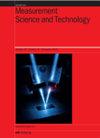隐蔽自走生物的简单追踪
IF 3.4
3区 工程技术
Q1 ENGINEERING, MULTIDISCIPLINARY
引用次数: 0
摘要
加深对动物集体运动的了解是一个多学科目标。然而,量化实验室和自然界中数百种动物的运动给数字图像处理带来了根本性的挑战:我们如何从人群中追踪每个物体,同时又能让它们在三维(3D)域中自由移动?在这里,我们提出了一种简单的跟踪策略,即使移动物体遭遇遮挡,也能借助镜子重建三维轨迹。我们使用合成生成的数据集解释了该方法,并将其应用于测量在实验室规模的水族箱中以中等雷诺数(1Simple tracking of occluded self-propelled organisms
Deepening our understanding of animals’ collective motions represents a multidisciplinary goal. Yet, quantifying the motions of hundreds of animals in the laboratory and nature posits a fundamental challenge for digital image processing: How do we track each object out of the crowd while allowing them to move freely in a three-dimensional (3D) domain? Here, we present a simple tracking strategy to reconstruct 3D trajectories with the aid of a mirror, even if moving objects experience occlusion. We explain the method using synthetically generated datasets and apply it to measure collective motions of phototactic zooplankton, Daphnia magna, swimming in a lab-scale aquarium at intermediate Reynolds numbers, 1
求助全文
通过发布文献求助,成功后即可免费获取论文全文。
去求助
来源期刊

Measurement Science and Technology
工程技术-工程:综合
CiteScore
4.30
自引率
16.70%
发文量
656
审稿时长
4.9 months
期刊介绍:
Measurement Science and Technology publishes articles on new measurement techniques and associated instrumentation. Papers that describe experiments must represent an advance in measurement science or measurement technique rather than the application of established experimental technique. Bearing in mind the multidisciplinary nature of the journal, authors must provide an introduction to their work that makes clear the novelty, significance, broader relevance of their work in a measurement context and relevance to the readership of Measurement Science and Technology. All submitted articles should contain consideration of the uncertainty, precision and/or accuracy of the measurements presented.
Subject coverage includes the theory, practice and application of measurement in physics, chemistry, engineering and the environmental and life sciences from inception to commercial exploitation. Publications in the journal should emphasize the novelty of reported methods, characterize them and demonstrate their performance using examples or applications.
 求助内容:
求助内容: 应助结果提醒方式:
应助结果提醒方式:


